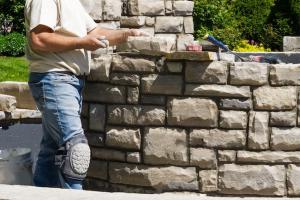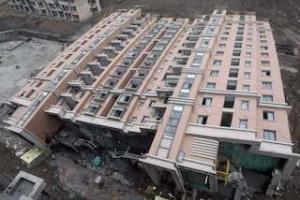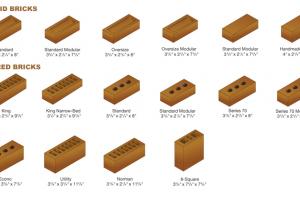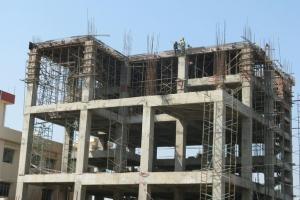Structural & Non Structural Defects in Building Construction

Concrete is a very versatile material. It can be cast in place with or without reinforcement. It can also be precast or prestressed to achieve the required strength. To achieve the required strength there is a need for a proper understanding of its behavior and constituents that are making the concrete. Any type of negligence in any of its phases like placement, design & maintenance can lead to its deterioration and finally, it will not be able to perform its intended functions. Some of the factors that can cause the deterioration of concrete are:
- Accidental loading
- Chemical reactions like sulfate attacks, alkali-carbonate reactions, alkali-silica reactions, etc
- Corrosion of steel reinforcement
- Poor construction detailing
- Erosion
- Freezing and Thawing
- Shrinkage
- Settlement
- Fire and weathering
Defects in Building Design:
Inadequate structural design means that concrete is exposed to flexural and shearing stresses that are greater than its design strength. All that leads towards spalling and cracking of concrete. Any abrupt change in the cross-section of any member can cause an increase in stress concentration in that member which will ultimately result in cracking of concrete. Deflection is one of the major parts of structural design. If there is any problem in its consideration during design, that can lead to the cracking of concrete. Inadequate provision of drainage and expansion joints during the design also becomes the cause of deterioration and spalling of concrete.
Defects During Construction:
Defects during building construction can range from improper mixing, placing, and curing of concrete. Removal of shoring & formwork is another cause of the production of cracks in concrete. If additional water is added to concrete in order to increase the workability of concrete, it increases the water-cement ratio which leads to the strength reduction. Improper alignment of formwork causes erosion of concrete.
Structural Defects in Building Construction:
 Structural defects in building construction refer to flaws or weaknesses in the structural elements of a building. These defects can compromise the integrity and stability of the structure, potentially leading to safety hazards and the deterioration of the building over time. They are typically categorized based on the location of the defects, such as cracks in the foundation, floors and slabs, or walls.
Structural defects in building construction refer to flaws or weaknesses in the structural elements of a building. These defects can compromise the integrity and stability of the structure, potentially leading to safety hazards and the deterioration of the building over time. They are typically categorized based on the location of the defects, such as cracks in the foundation, floors and slabs, or walls.
Structural defects in buildings can be categorized as:
- Cracks in foundation (substructure)
- Cracks in floors and slabs (superstructure)
- Cracks in Walls (superstructure)
1. Cracks in foundation (substructure):
The foundation of a building provides a stable base upon which the entire structure rests. Cracks in the foundation can occur due to various reasons, including inadequate design or construction, poor soil conditions, excessive moisture content, or settlement of the soil. These cracks can weaken the foundation and lead to structural instability.
2. Cracks in floors and slabs (superstructure):
Floors and slabs are horizontal elements that provide support and distribute loads within a building. Cracks in these components can result from factors such as improper reinforcement, excessive loading, inadequate structural design, or insufficient curing of concrete. These cracks can affect the overall strength and performance of the floors, compromising their ability to bear loads or causing unevenness.
3. Cracks in walls (superstructure):
Walls are vertical load-bearing elements that provide structural support and enclosure for a building. Cracks in walls can occur due to a range of issues, including poor workmanship, structural movement, settlement, temperature changes, or the use of low-quality materials. These cracks can compromise the stability and aesthetics of the walls, impacting their load-bearing capacity and integrity.
Causes of Structural Defects in Buildings
These building defects can be caused by the following factors:
- Improper soil analysis
- Improper site selection
- Use of defective materials
- Substandard work
Most of the structural problems can be avoided by proper design and planning.
1. Improper soil analysis:
Inadequate assessment and analysis of the soil conditions at a construction site can result in incorrect foundation design or the selection of inappropriate construction techniques. This can lead to foundation settlement, differential movement, or inadequate load-bearing capacity, ultimately causing cracks and structural defects.
2. Improper site selection:
Choosing a site without considering factors such as soil stability, proximity to water bodies, geological conditions, or the presence of potential hazards can contribute to structural defects. Sites with unfavorable conditions may experience excessive ground movement or inadequate support, leading to the development of cracks and instability.
3. Use of defective materials:
The use of substandard or defective construction materials, such as low-quality concrete, steel, or masonry units, can significantly weaken the structural elements of a building. These materials may lack the required strength, durability, or resistance to environmental factors, making them susceptible to cracking and deterioration.
4. Substandard work:
Poor workmanship during the construction process, including inadequate supervision, improper construction techniques, lack of quality control, or negligence, can contribute to structural defects. Errors in the placement of reinforcing bars, insufficient concrete compaction, improper curing methods, or failure to follow engineering specifications can result in compromised structural integrity and the development of cracks.
Addressing and rectifying structural defects in buildings typically requires the involvement of qualified professionals such as structural engineers or construction experts. They can assess the extent of the defects, identify the underlying causes, and propose appropriate remedial measures, which may involve repair, reinforcement, or even reconstruction, depending on the severity of the issues. Regular inspections, quality control, and adherence to construction standards and codes can help prevent structural defects and ensure the long-term safety and durability of buildings.
Non-Structural Defects in Building Construction:
Non-structural defects in building construction refer to flaws or issues that do not directly impact the structural integrity of a building but affect its functionality, aesthetics, or comfort. These defects typically involve elements such as brickwork, dampness, and plaster works. While they may not pose immediate safety risks, non-structural defects can still cause inconvenience, decrease the lifespan of building components, and require repair or maintenance. Non-structural defects include:
- Defects in brickwork
- Dampness in old structures
- Defects in plaster works
It can be concluded that design and construction defects at the least can cause minor cracking or spalling leading to concrete deterioration and may become a source of a major structural failure. Therefore a great deal of attention and care is required in designing, detailing, and constructing concrete structures.
Defects in Brickwork
Brickwork defects can include issues such as cracking, crumbling, or displacement of bricks. These defects can occur due to factors like inadequate mortar mix, poor workmanship, insufficient curing, or improper alignment of bricks. Brickwork defects can compromise the appearance and weatherproofing of walls, affecting their durability and thermal performance.
Dampness in Old Structures
Dampness is a common non-structural defect found in older buildings. It can result from various sources, including leakage from plumbing systems, poor waterproofing, inadequate drainage, or rising dampness from the ground. Dampness can lead to mold growth, decay of building materials, and deterioration of finishes, causing unpleasant odors, health hazards, and aesthetic issues.
Defects in Plaster Works
Plaster defects refer to problems with the application or quality of plaster on walls, ceilings, or other surfaces. These defects can include cracking, peeling, unevenness, or poor adhesion. Factors such as improper mixing of plaster, inadequate surface preparation, or excessive drying time can contribute to plaster defects. These defects can affect the appearance and integrity of interior finishes and may require repair or reapplication of plaster.
Methods of Addressing Non-Structural Defects in Buildings
Addressing non-structural defects in building construction typically involves a combination of preventive measures and remedial actions. Some approaches to deal with these defects include:
Proper construction techniques:
Following best practices and industry standards during construction can help prevent non-structural defects. This includes using appropriate mortar mix and bricklaying techniques, ensuring proper surface preparation before plastering, and employing effective waterproofing measures.
Regular maintenance:
Conducting routine inspections and maintenance can help identify non-structural defects at an early stage. Prompt repairs and maintenance, such as sealing cracks in brickwork, addressing plumbing leaks, or improving drainage systems, can prevent the escalation of defects and minimize their impact.
Remedial works:
When non-structural defects are already present, remedial actions may be necessary. These can include patching or re-plastering damaged areas, applying waterproofing treatments, or implementing improved ventilation systems to address dampness issues. In some cases, it may be necessary to engage professionals, such as plasterers or waterproofing specialists, to carry out the required repairs.
It's important to note that while non-structural defects may not pose immediate risks, they can still affect the overall quality and value of a building. Regular maintenance, adherence to construction standards, and the use of quality materials and workmanship can help minimize non-structural defects and ensure the longevity and functionality of buildings.












